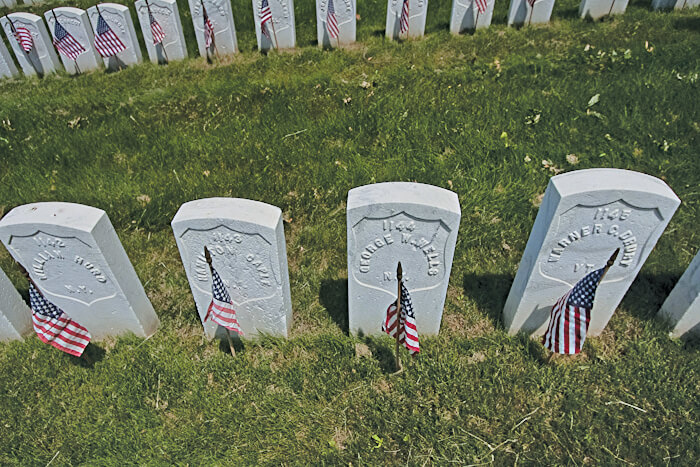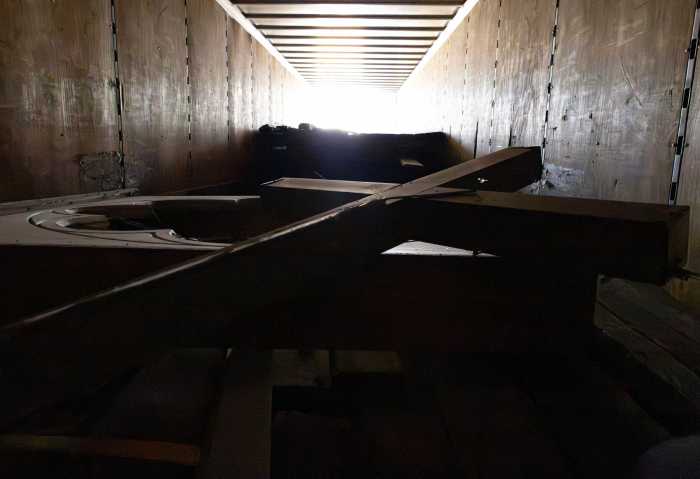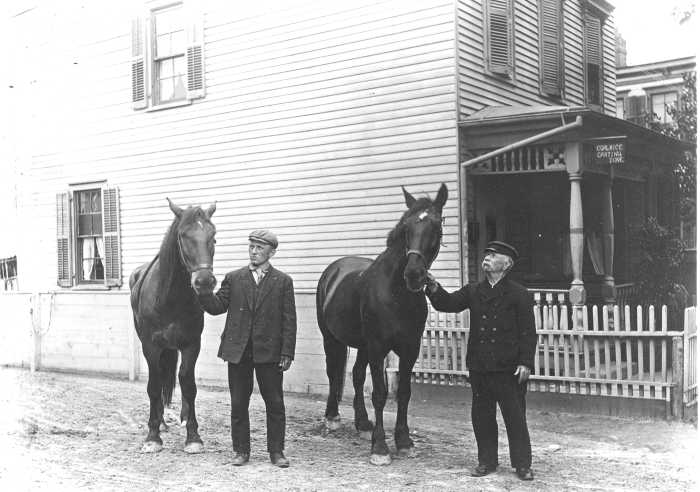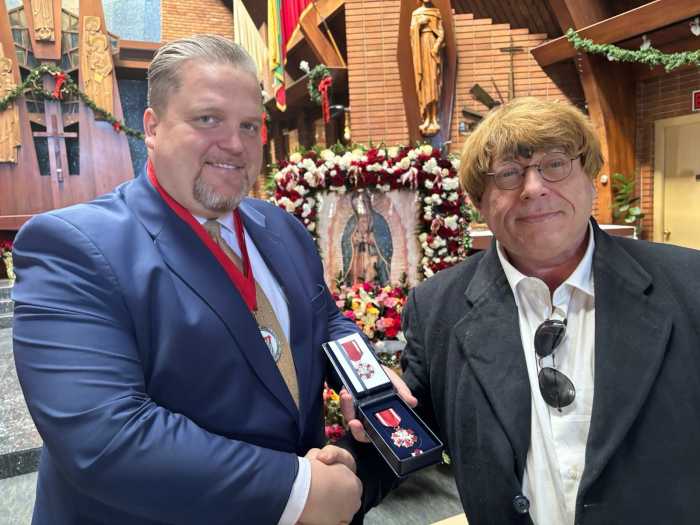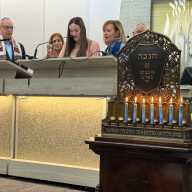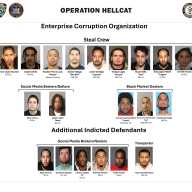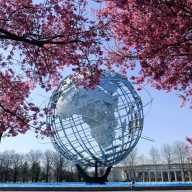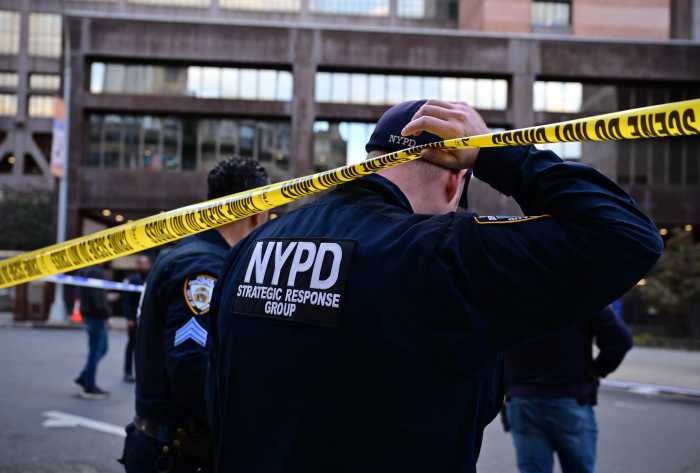Our Neighborhood has many memorials dedicated to the local soldiers who gave their lives in defense of our country in the First and Second World Wars. However, nearly two centuries ago now, many local residents in what would become the Greater Ridgewood area fought for the Union in the bloodiest conflict in American history.
Little has been documented about local contributions to the Union’s effort in the Civil War. In 1976, the Greater Ridgewood Historical Society did touch upon some local Civil War history in its book, “Our Community: Its History and People.” The book is out of print now and hard to find, but fortunately, The Old Timer has a copy and is happy to share some of its contents with you from time to time.
So here’s an excerpt of what the Greater Ridgewood Historical Society wrote about The Civil War in Our Neighborhood:
When the Civil War burst loose in 1861, it’s not to be presumed that the North was entirely in favor of war. Especially during the early months of the war, there were men in the north — including the Queens community of Newtown, the predecessor of the modern-day Greater Ridgewood area — that were either sympathetic to the Southern cause, or who simply advocated non-involvement.
But as the Union casualties poured in from the various fields of battle, and as the reality of the grim struggle slowly revealed itself, it became dangerous to be anything but a staunch Union man.
In his “History of Queens County,” published in 1882, W. Munsell wrote, “A Union meeting was held at Newtown, when a huge coffin mounted on wheels was trundled through the streets, labeled ‘Newtown Secession died out on Aug. 29, 1861,’ southern rebels and northern traitors are all denounced.”
Hundreds of Newtown men then joined various military units in the State of New York, and hundreds of them were either killed or wounded on almost all Civil War battlefields. Since Ridgewood was part of Newtown, we know that it sacrificed its share of manhood toward the saving of the Union. Its men were drafted into the various New York State regiments. It might be interesting to note that only one Queens area formed its own distinct military group, that marched as a unit on the fields of war, the Flushing Battery.
The boys of Greater Ridgewood, who went off into those far-off strange lands called Texas and Pennsylvania to fight for the government, were not “city-slickers,” but mostly farm boys themselves. Greater Ridgewood in 1861 was certainly farmland, though perhaps crowded farmland. There were some 14,000 people living in Newtown.
The names Cypress Hills and Cypress Avenue appear often in relation to Ridgewood’s Civil War history. It is mentioned in past chronicles that East New York (which lies south on the other side of the Ridgewood hills), became a tent city, where soldiers were trained before their journey south. At the same time, Cypress Hills, then full of dense forests, became sort of a meeting ground, where sharp-tongued orators tried to make an almost evangelical crusade of the war, inducing men to enlist into the Northern armies.
Kreuscher’s Hotel at Cypress and Myrtle Avenues was already six years old when the war began. This hotel was put to use by the government to afford board to Union officers, who were training for army service.
In a letter dated Sept. 10, 1959, Fred C. Kreuscher, who was born in this hotel in 1883 and later became its manager, mentioned that his grandfather Frederick Stroebel was paid one dollar a day for each of the men he gave bed and board.
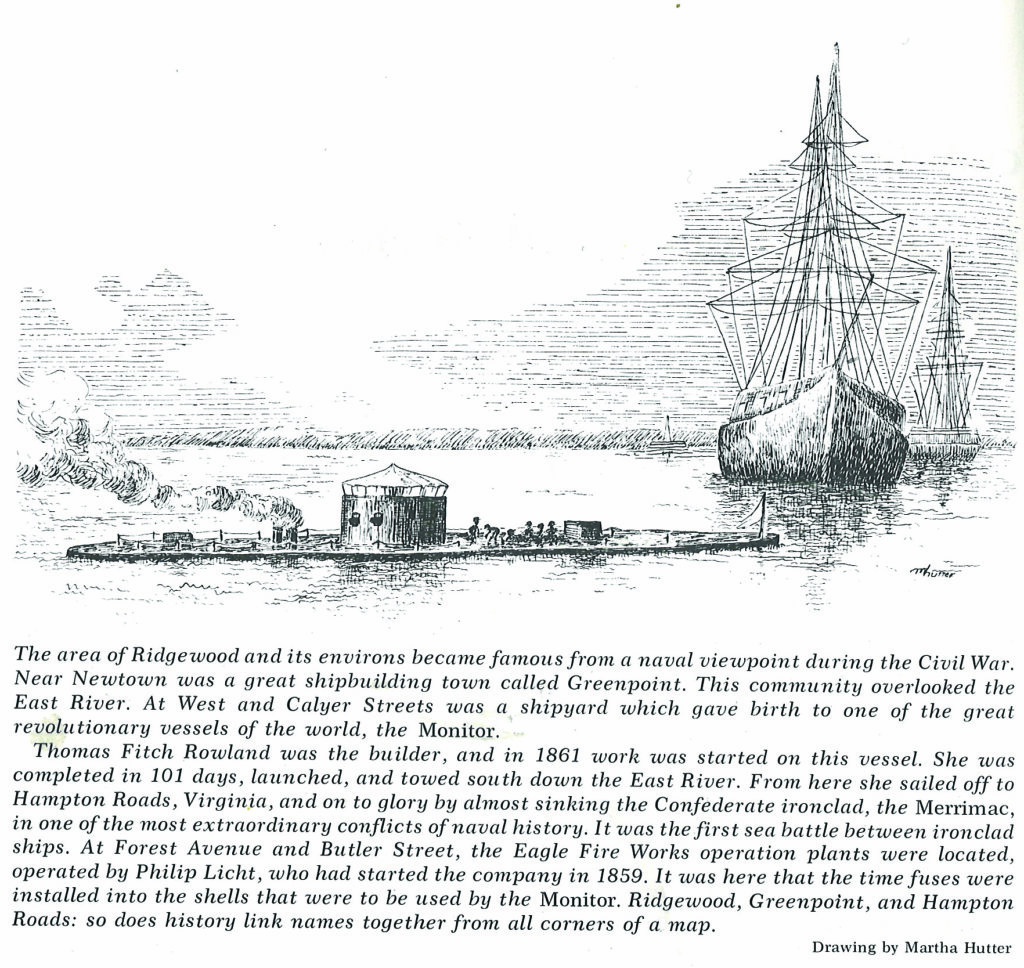
William Denton, a Ridgewood farmer long dead, with a family name in the Newtown area that goes back to 1704, once spoke of “wagonloads of coffins containing soldiers who had been wounded and sent north, and who died in New York hospitals. They were buried in the National Cemetery at Cypress Hills, where they lie in peace today.”
He was referring to a procession of wagons that took place almost daily up Cypress Avenue. Not far from where officers and men trained for battle, some were returned to be buried. …
If one looks at the old gravestones in some of our old Queens cemeteries, such as the Lutheran Cemetery, one will find the resting places of many Civil War veterans. A Ridgewood resident need take but a short ride south over Cypress Hills Street and he will find, in this vast complex of burial grounds, a National Cemetery. In it are buried the dead of many wars, including the War between the States.
There aren’t any huge Civil War monuments in Greater Ridgewood; none of the great battles were fought here. But the record is clean and clear: The boys of old Newtown did go off to Gettysburg and Petersburg, and they were wounded or died there, after they had been trained on Newtown fields and drilled in its smoky halls. Some died later from their wounds in Manhattan hospitals, and were shipped in simple, wooden coffins in horse-drawn wagons up Cypress Avenue to the Union Cemetery.
Like William Denton said, “they lie in peace today.”
* * *
If you have any remembrances or old photographs of “Our Neighborhood: The Way It Was” that you would like to share with our readers, please write to the Old Timer, c/o Ridgewood Times, 38-15 Bell Blvd., Bayside, NY 11361, or send an email to editorial@ridgewoodtimes.com. Any print photographs mailed to us will be carefully returned to you upon request.

